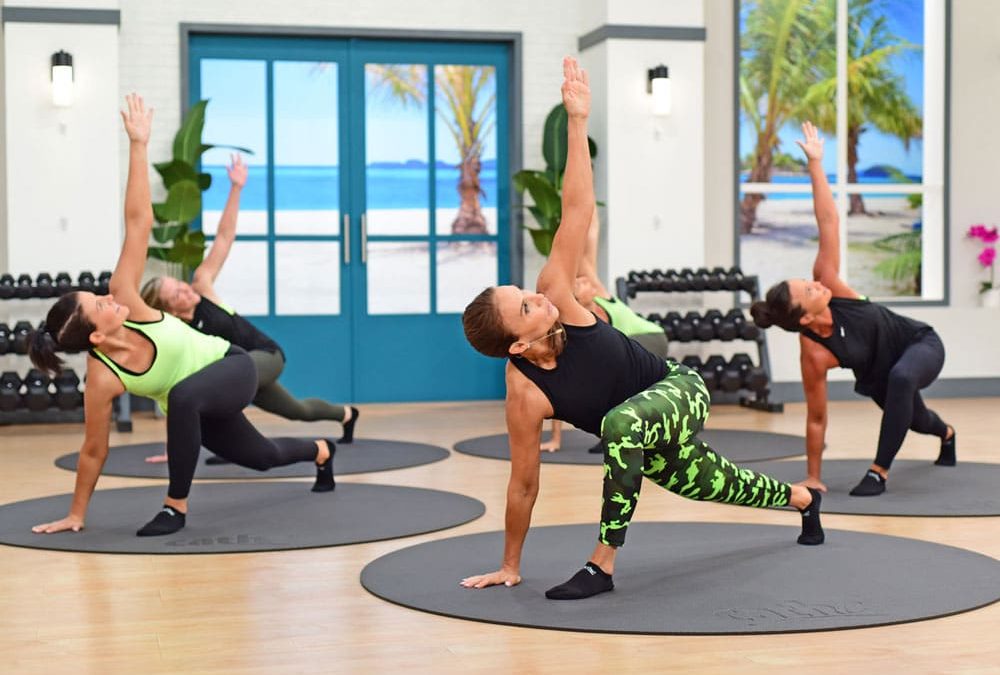Sometimes your body needs a break from intense exercise, or injury may force you to take a break from high-intensity workouts and heavy resistance training. Intense exercise takes a toll on your body unless you give your muscles and the rest of your body a chance to recover.
One way to recover from an intense exercise session is to simply relax and “take the day off.” Another approach is to do an active recovery where you keep moving your body but in a gentler way. That’s where restorative exercise is of benefit. Restorative exercise is a form of exercise that focuses on slow, gentle movements. It’s sometimes called gentle exercise or passive physical therapy (PPT) or described as “therapeutic movement” or “active rest.”
Restorative exercise is an integrative exercise therapy that uses low-impact movements and stretches to increase mobility and flexibility, improve balance, and enhance coordination and posture for injury rehabilitation or prevention. Restorative exercise emphasizes:
The goal is to ease stress, relax and rejuvenate the body and mind. Restorative exercise isn’t just for older people — it’s suitable for anyone who wants to improve their health and wellbeing. It’s a way to enhance functional ability without overstressing your joints or muscles.
The benefits of restorative exercise include:
Restorative exercise is used to treat many common medical conditions. Restorative exercise helps with pain and stiffness of conditions like lower back pain and helps improve posture and flexibility. Restorative exercise is not just for the elderly and for chronic pain. It’s helpful for treating a variety of conditions including:
Musculoskeletal problems (e.g., back pain)
But you can also include restorative exercise in your own fitness routine, as a form of recovery from more intense forms of exercise.
Now let’s look at some types of restorative exercise.
Pilates is a system of strength and flexibility training developed by Joseph Pilates in the early 20th century. Pilates believed that exercising the body too vigorously could cause injury. Instead, he wanted people to move their bodies with control and precision while holding certain poses for extended periods of time (usually 10 seconds).
In fact, Pilates called his system “Contrology” because he believed that controlling muscle movements could improve posture and circulation as well as overall fitness levels. The movements of Pilates are a series of exercises designed to strengthen, stretch, and align the body. Pilates targets the core muscles, which are the muscles of the abdomen, back and hips. The core muscles provide stability for all other movements in the body and support proper posture. Pilates focuses on developing strength, flexibility, and control of these muscles.
If you do Pilates movements at home as a restorative form of exercise, warm up with a few simple stretches to prepare your muscles for movement. Then, move on to a series of exercises that involve holding your body in various positions and making controlled movements. Focus on your breathing and remember to move slowly and deliberately while maintaining proper posture. The movements are gentle enough to allow your body to recover but also boost core strength and stability.
Yoga
Yoga is another popular form of restorative exercise. Yoga is a physical, mental, and spiritual practice or discipline which originated in ancient India. The word yoga comes from the Sanskrit word ‘yuj’ which means “to unite” or “to yoke.” Yoga is a holistic practice that has been around for more than 5,000 years and has been used to improve health and well-being.
Yoga is more than just poses. It’s about breathing, meditation, and mindfulness too. It can also help you relax, reduce stress, and lower blood pressure while enhancing flexibility, strength, and balance. It also helps ease muscle tension and enhance mental clarity and emotional balance.
Practicing yoga can bring self-awareness, improved breathing, increased energy, and greater connection with your body. People who practice yoga often make smarter dietary choices due to the mindfulness benefits. Yoga is an excellent form of restorative exercise that has long-term benefits for physical, mental, and spiritual health. It’s a nice contrast to more intense workouts
Tai Chi
Tai Chi is a Chinese martial art that uses slow, gentle movements to improve health. It is also an effective form of restorative exercise for reducing stress and improving concentration. The movements of Tai chi involve deep breathing and stretching, which help to increase balance, flexibility, and energy.
Additionally, research has shown that Tai Chi has positive effects on the immune system, cardiovascular health, and emotional health. It can also enhance coordination, reduce joint pain, and even improve posture. Best of all, it’s gentle on your body for those days when you need to recover.
Stretch therapy is another form of restorative exercise in which you do movements that lengthen your muscles. It’s also a popular form of restorative or recovery exercise that has benefits. Stretching helps to increase your range of motion (ROM), reduce muscle stiffness, improve joint stability and balance, decrease pain from injury, and may prevent injuries from occurring in the future, although studies are conflicting.
Stretching is also important for people recovering from an injury or surgery or for those with chronic conditions such as arthritis or lower back pain. By stretching regularly, you temporarily lengthen your muscles and boost circulation throughout your body while reducing stress on joints and muscles. Another good time to stretch is right after a workout but you can also do total body stretches on a recovery day.
Meditation
Although it doesn’t involve moving your body, meditation is also a restorative form of exercise. Mindfulness meditation can help you relax, focus, and sleep better while reducing stress and improving mindfulness. Developing greater mindfulness and body awareness can also improve your workout performance. Additionally, it helps improve focus and clarity, allowing you to stay on track and more easily reach your fitness goals.
Restorative exercise is a great way to improve your health and reduce stress. If you’re looking for a way to boost your overall well-being while allowing your body to recover, it’s worth considering these types of restorative exercise. Keep doing intense workouts but give your body some time to recover too.
References:
“The Health Benefits of Tai Chi – Harvard Health.” 24 May. 2022, https://www.health.harvard.edu/staying-healthy/the-health-benefits-of-tai-chi.
“Tai Chi: What You Need To Know | NCCIH.” https://www.nccih.nih.gov/health/tai-chi-what-you-need-to-know.
“Restorative Yoga Poses: Benefits and Poses for Relaxation – Healthline.” https://www.healthline.com/health/restorative-yoga-poses.
“Meditation For Athletes Improves Sports Performance | Awaken.” 20 Jul. 2020, https://awaken.com/2020/07/meditation-for-athletes-improves-sports-performance/.
Related Articles By Cathe:
This content was originally published here.

